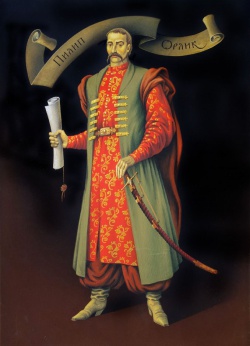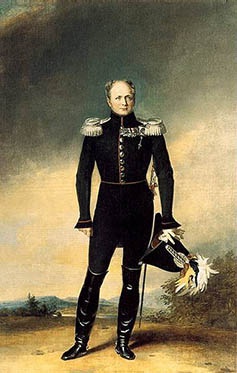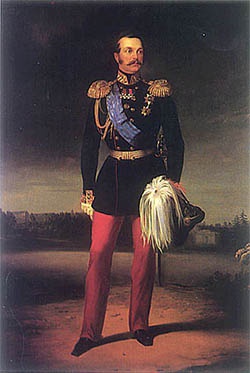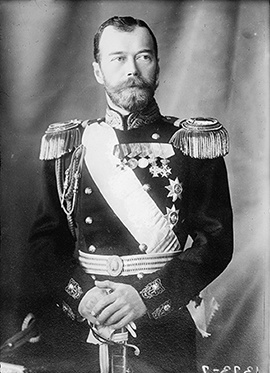|
History of Ukraine, some of its land has long been interested travelers and explorers. Ukrainian land is especially known for its ancient towns and fortresses. In particular, Khotyn is one of the oldest cities in Ukraine, which is a majestic fortress. On its grandeur and significance is the fact that in different periods of prominent figures have visited the fortress. |
|
|
In the twelfth century Khotyn joined the Terebovlia and Galician lands, becoming a significant trading center on the Dniester waterway. It is believed that the first stone fortifications Khotyn fortress could be 40-50 years of the twentieth. XIII century. When Daniel Romanovich, Prince Galitsky, strengthening old and building new fortresses to defend against the Mongol-Tatar invasion. In particular, there is a chronicle story about Daniel Galitsky stay on Khotinshchina in 1230. As is known, according to the chronicler, Prince Daniel then gathered the people "from the river to the river and Bobrka Ushytsya and Prut." The then Khotinshchina territory once and reached the Prut River to the north and the east of the included areas located opposite the confluence Ushytsya in the Dniester.
|
|
|
Danilo Halytska

|
|
|
|
Khotyn and Khotinshchina been a place of private military clashes and conflicts between different countries, competed for influence in these lands. In particular, in 1620 in Khotyn was ten thousandth of the Polish army which included a detachment of registered Cossacks, among whom Chigirinsky podstarosta Mikhail Khmelnitsky and his 25-year-old son, Bogdan (future hetman of Ukraine). August 24 army acted in the direction of Khotina Prut, reached in September Tsetsoroy from Iasi. Where fierce fighting took place, during which the Turks and Tatars destroyed the Polish army. Died Mikhail Khmelnitsky and Bogdan was captured by the Turks, with whom resigned after only two years. |
|
|
Bogdan Hmelnitsky

|
|
|
|
IIn 1621, under Khotyn it took one of the large-scale military conflicts in Europe - the battle, which because of its duration was called Khotyn war. In this war, it involved an extremely large number of troops, but she became famous as a result of generals who led troops. In particular, the Hetman Peter Konashevych Sahaidachny, who led the army of Zaporozhye, after which the concentration of all divisions with Cossack youth (servants, Jur) employs more than 45-47 thousand. Man. By the standards, it was a huge military force fighting which played a key role in the destruction of the aggressive plans of the Ottoman Empire against the Commonwealth. However, Sagaidachnogo in the fighting involved and his best friend, and the Cossack Colonel Mykhailo Doroshenko (the grandfather of the future hetman Peter Doroshenko). Also unjustly forgotten Zaporozhye Hetman Yakov unrelated-wart, executed in the Polish camp under Khotyn September 8, 1621.. |
|
|
Peter Sahaidachny

|
|
|
|
The Cossacks were Khotyn and later taking part in the Polish-Turkish wars and campaigns of Poles in Moldova. So in 1673 Khotin again there was a great battle between the army crown hetman Jan Sobieski (30-thousand army) and the 40 thousandth Turkish army. As a result of fierce battles won by Polish-Lithuanian-Cossacks. Allied losses were relatively minor, but among the dead on Nov. 11, 1673 was a young nobleman from County Oshmyanskoho that in Lithuania, Stephen Orlik, father of the future Ukraine Hetman Orlyk.
In the spring of 1722 the city and visited the fortress Ukrainian hetman-exile Philip Orlyk, the successor of Ivan Mazepa. He secretly arrived from Poland Khotyn to go from there to Istanbul. However, Abdi Pasha, governor Sultan who led the military administration Khotyn district detained Orlyk, waiting for orders from the capital on his fate. Hetman settled not in the city "for the near Khotyn in the village" as zanotuvav it in his travel diary. Unfortunately, Philip Orlik never mentioned the name of the village in which he lived. Through archival documents was found that it was called Rumla. Subsequently Orlik was ordered to move into Khotyn. Hetman left Khotina 19 (30) in May 1722, not yet knowing what Khotyn district - this is the last piece of the Ukrainian land, which he had to travel. Twenty years he spent in Turkey, where he was forbidden to leave. Died May 24, 1742 by 70-year life in Iasi.
|
|
|
Pulup Orluk

|
|
|
|
We not escape his attention Khotyn and autocrats attract Russian Romanov dynasty. It is known that in a city visited by the Russian Emperor Alexander I and Alexander II. I was in town and the last Russian Tsar Nicholas II. About his stay in our city preserved the documentary evidence and photographs. The arrival of Nicholas II in Khotyn was connected with the events of the First World War, in particular, training in 1916 before the South-Western Front under General Brusilov. Visit Khotina made a good impression on the emperor. In particular, it was here that the king was presented with a plan of the offensive of the Southwestern Front, which made history as Brusilovsky breakthrough. Thus, in the ancient Khotina visited many famous historical figures: ancient princes, Moldovan hosts. European monarchs, the Ottoman Sultans, military commanders, diplomats, public and cultural figures, who left behind a rather large footprint in the history of our region. |
|
|
Alexander I

|
Alexander II

|
Nicholas II

|
|
|
Version for people with visual impairment
Increase text size
Decrease text size
Shades of gray
High contrast
Negative contrast
Cancel
Version for people with visual impairment